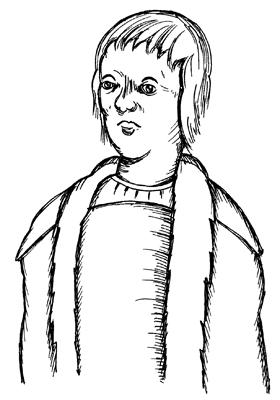 |
 |
|||
|
|
Richard
was the son of Edmund Weston of Boston in Lincolnshire and Catherine, sister
and
coheiress of William Cammel of Shapwick in Dorset. His
father was Governor of Castle Cornet and of Guernsey and the lesser
Channel Islands. Richard entered the service of Henry VII’s queen,
Elizabeth of York and this may well have been where he met his wife, Anne
the daughter of Oliver Sandys of Shere at Dorking in Surrey, for she was certainly one
of her gentlewomen by 1502. The following year, Richard was appointed Keeper
of Sunninghill Park and
Cranbourne Chase and the Lodge
at the latter became his main country
residence, particularly when attending the King at Windsor Castle where he
was also made a lieutenant. During his time there, he built the first New
Lodge at Winkfield.
Other Berkshire offices followed, including
Steward of Bray & Cookham, Steward of
Stratfield Mortimer and Keeper of
the Swans on the Thames. By 1505, he had become a Groom of the Chamber and,
the following year, inherited his father’s castle governorship. After
his accession in 1509, King Henry VIII immediately favoured Richard
by appointing him to several offices, including Governor of Guernsey, and
the following year, he was granted his own Berkshire property, Ufton
Court.
In 1511, he served under Thomas, Lord Darcy, in
the English contingent sent to assist Ferdinand, King of Aragon &
Castile, in his campaign against the Moors. On his return journey, Weston
visited the Royal Spanish Court where he received considerable honours. This
continued back in England. He was knighted by Henry VIII in 1514 and, from
1516, was in personal attendance on him as Knight of the Body. In early
1518, he was dubbed a Knight of the Bath before forming part of an embassy
attempting to betroth Princess Mary to the Dauphin. He was then made Master
of the Wards, along with Sir Thomas Lovell, and considerably increased the
power of that office during his time there. The next year, Wolsey’s
reaction against the King’s youthful advisors, led to Sir Richard being
one of the four “sad and ancient knights” who were “put into the
King’s Privy Chamber”. In
1520, he attended King Henry on the Field of the Cloth of Gold and later at
the Imperial meetings at Gravelines and Windsor. The next year, he sat on
the jury which tried and condemned Edward Stafford, the 3rd Duke of
Buckingham, and the manor of Sutton at Mayford in Surrey was granted to him on the very
day of the Duke’s execution, 17th May 1521. Inspired by what he had seen
on his French embassy, he soon moved into a superb renaissance mansion which
he built there. In
1523, Weston served under Charles Brandon, Duke of Suffolk, in France. In
1525, under Wolsey’s patronage, he became Treasurer of Calais where he
spent considerable time, arguing with Lord Sandys the Captain of Guines and
rebuilding the town’s sea defences. However, three years later, he was
also appointed Under-Treasurer at the Exchequer. So he regularly had to
cross the Channel, especially after he became MP for Berkshire in 1529. In
1533, Henry paid
a state visit to
Sir Richard’s new home at Sutton Place and, a little later, Thomas
Cromwell was also a guest there. By this time, his son, Francis, had become
the rising star at Court. He was knighted at Anne Boleyn’s Coronation, but
his popularity was fleeting. On 4th May 1536, Francis was arrested on
suspicion of being the Queen’s lover and, despite his father’s
petitioning the King, he was beheaded two weeks later. This
personal disaster did not, however, affect Sir Richard’s political
position. He attended the King with a hundred and fifty men during the
Lincolnshire Rising and, later, became a close advisor to Queen Jane
Seymour. In January 1540, Sir Richard met Anne of Cleves upon her landing in
England but, by this time, his health was failing. On 20th January 1541, he
surrendered his post of Sub-Treasurer “because of his old age, his
debility and continued infirmity”. He died on 7th August following and was
buried in his family chapel in the Church of the Holy Trinity in Guildford,
although no trace of his monument survives.
|
|||
| © Nash Ford Publishing 2010. All Rights Reserved. | ||||



 Sir Richard Weston (1465-1541)
Sir Richard Weston (1465-1541)